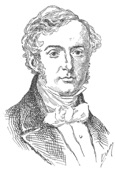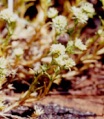






Why are we called the Browns River History Group?
The name goes back to our earliest colonial times.
In 1804, while exploring to find the headwaters of the Huon River, Mr Robert Brown followed a river down to the “sea”.
It wasn’t the Huon, but a smaller river later named Browns River, in his honour. Its earlier very proper name was Mr Browns River.
Robert Brown was an eminent Scottish botanist and plant collector who was selected by Sir Joseph Banks to accompany Matthew Flinders to Australia and to circumnavigate it with him.
Brown’s task was to collect and describe Australia’s flora. He collected some 3400 species of which 2000 were previously unknown.
The area explored by Brown in 1804
Acacia melanoxylon Bellendena montana Ranunculus collinus Hymenanthera dentata Scleranthus diander
Australian blackwood Mountain rocket Strawberry buttercup Tree violet Tufted knawel
Robert Brown became a highly regarded botanist in London. In 1810 he published the results of his collecting in his famous Prodomus Florae Novae Hollandiae et Insulae Van Diemen, the first systematic account of Australian flora.
He was Sir Joseph Banks’ librarian and inherited the Banks library and herbarium which is now held in the British Museum in London.
Robert Brown is known for more than plant collecting.
He observed what physicists know as Brownian Motion - watch the YouTube® video at left.
He was the first person to describe a living cell nucleus
Charles Darwin came to him for advice before beginning his journey on the HMS Beagle in 1831.
Many of his discoveries have real time applications today, including mathematical modeling used to try to understand stock market fluctuations.
Brownian Motion, first seen as the movements of smoke particles in air, is here seen under a microscope as tiny particles being bumped around by invisible water molecules which are far too small to be seen.
Note
Each of the pictures on this page is available in a larger version. Just click on the picture to view it enlarged. You will need to use your browsers <back> button to return to this page.
Do you recognise any of these plants which were
named by Brown?
Browns River mouth where it meets the Derwent River at Kingston Beach











